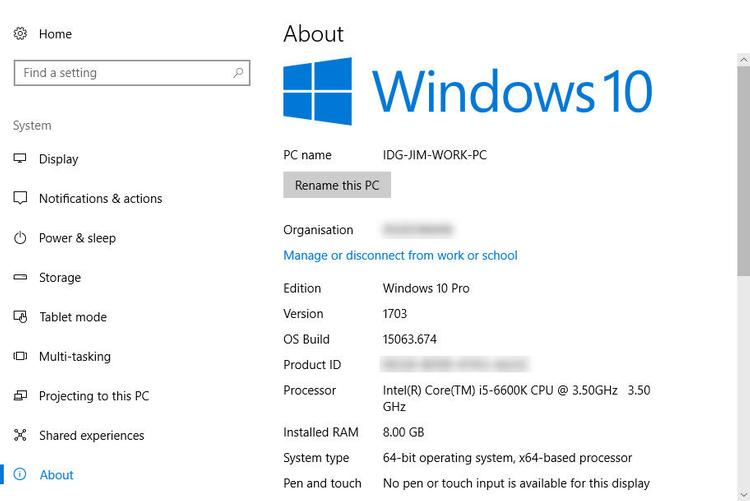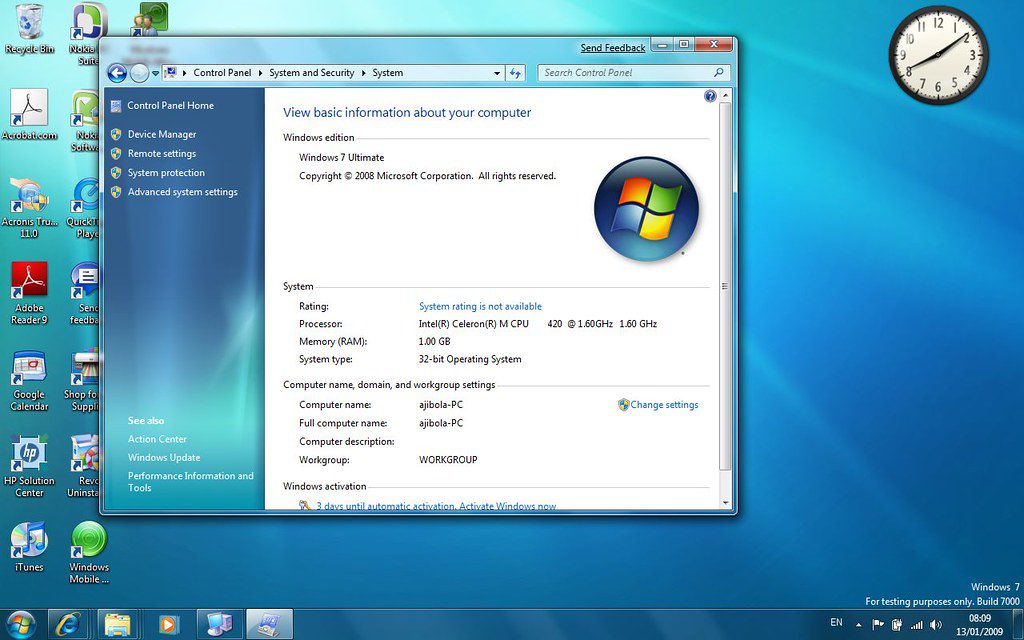Have you ever wondered what’s inside your PC? Knowing your specs isn’t just for tech enthusiasts—it’s essential for everyone. From troubleshooting to upgrading, or just out of curiosity, understanding your hardware can make a big difference.
Therefore, in this article, we have enlisted simple methods how to see your PC specs using Windows settings, system information, and Device Manager.
Remember, it’s not only about knowing your computer— it’s about understanding your computer better and ensuring it’s performing at its best. Ready to uncover what’s under the hood? Then, keep reading.
Related: How to Uninstall the Default Apple Apps on Mac?
What are PC Hardware Specifications?
PC hardware specifications detail the internal components of your computer. These components include:
- CPU
- RAM
- GPU
- Motherboard
- Operating System
- BIOS/UEFI firmware
The processor (CPU) acts as the brain– handles all software instructions and manages tasks. Memory (RAM) offers temporary storage for data that the CPU is actively using to ensure smooth performance. Storage options include hard drives (HDD) and solid-state drives (SSD). HDDs provide ample space but are slower, while SSDs are faster and more reliable for storing files and applications.

The graphics card (GPU) is responsible for rendering images, videos, and animations. Hence it’s essential for gaming and graphic designing tasks. The motherboard connects and synchronizes all components of your computer. The operating system (OS), like Windows or macOS, manages both hardware and software resources. Whereas, the BIOS/UEFI firmware initializes hardware during the booting process.
How to See PC Specs Using Windows Settings?
The most common and basic method to check a PC’s specifications is using the Window setting. It provides you with a quick overview of the basic specs that you may need to know about your PC. So, here is a quick step-by-step guide to help you understand how you can check your PC’s Specs using Windows settings.
- Click the Windows Start button at the bottom-left corner of your screen.
- Click the gear icon to open the Settings menu.
- In the Settings menu, click on System.
- Scroll down and click on About.
- Under Device specifications, you will see details about your processor, RAM, and system type (32-bit or 64-bit).
- Under Windows specifications, you can find information about your Windows edition, version, and OS build.
How To See Detailed PC Specs Using System Information?
Although the system setting is recommended for a quick overview of your PC’s specifications, if you want to get better insights into your PC’s offerings you can opt for system information. Here is a quick guide that will surely help you use system information for detailed specs review.
- Click the Windows icon at the bottom-left corner of your screen.
- Type “msinfo32” in the search bar and press Enter, this will open the System Information app.
- In the left navigation pane, click on “System Summary, this section provides an overview of your system’s key specifications.
- On the right side, you will see detailed information about your hardware and software. This includes the processor type, system memory (RAM), BIOS/UEFI version, and more.
- Click the “+” sign next to “Components” to expand categories. You can view detailed information about each component, such as the graphics card, network adapters, and storage devices.
- To create a report, click “File” in the top menu. Select “Export” and choose a location to save the file. This can be useful for sharing or keeping a record of your system specs.
Related: How To Change Brightness On PS4?
How To See PC Specs Using Advanced Device Manager?
Even though there are other methods to check your PC specs, using Device Manager is a straightforward and effective way to view detailed information about your hardware. This tool allows you to access and review the specifications of various components. For this, you can follow these simple steps to check your PC’s specs using Device Manager.
- Click the Windows Start button at the bottom-left corner of your screen.
- Press the Windows + X keys on your keyboard. Then select Device Manager from the menu that appears.
- In Device Manager, you will see a list of hardware categories. From that list click the arrow next to a category to expand it. For instance, click the arrow next to “Display adapters” to see your graphics card.
- Right-click on a specific device within the category. In the list select properties from the context menu.
- In the Properties window, go to the General tab. Here, you will find detailed information about the device, including its name, manufacturer, and status.
How to See Specs on PC Window 10?
Using Windows Settings
- Click the Windows Start button located at the bottom-left corner of your screen.
- Select the gear icon to open Settings: This icon represents the Settings menu.
- Click on System: This option will be in the Settings menu.
- Scroll down and click on About: This section provides an overview of your system.
- View your processor, RAM, and system type under Device specifications: Here, you will find details about your CPU, and memory.
- Check Windows edition, version, and OS build under Windows specifications: This section shows the version of Windows you are using, including any updates.
Using System Information
- Open Start: Click the Windows icon at the bottom-left corner.
- Type “msinfo32” and press Enter: This command opens the System Information app.
- Click on System Summary: This will be on the left side of the window.
- View detailed specs, including processor, RAM, and BIOS/UEFI version: The right side of the window will display comprehensive details about your hardware and software.
Using Device Manager (Advanced)
- Open Start: Click the Windows icon.
- Type “Device Manager” and press Enter: This opens the Device Manager.
- Expand categories to view detailed hardware information: Click the arrows next to each category to see more details about each component.
- Be cautious when making changes: Device Manager allows you to modify hardware settings, so only make changes if you are confident in what you are doing.
How to See Specs on PC Window 7?

Using System Properties
- Open the Start Menu: Click the Start button at the bottom-left corner of your screen.
- Access Computer Properties: Right-click on the “Computer” icon on the right side of the Start menu. Then, select “Properties” from the context menu.
- View Basic Specs: A window will open displaying your system’s basic specifications. Check details such as processor, installed memory (RAM), and system type (32-bit or 64-bit).
Using System Information
- Open Start Menu: Click the Start button.
- Search for System Information: Type “System Information” in the search bar and press Enter.
- Access System Summary: Click on “System Summary” in the left navigation pane.
Why Knowing Your PC Specs is Important?
Understanding your PC hardware specifications is crucial for several reasons:
- Performance Optimization
A deeper insight into your system’s specs can help you better understand your computer’s capabilities. This allows you to optimize performance, allows you to determine if it meets the requirements for specific applications and games.
- Troubleshooting
When your computer experiences issues, knowing the hardware details can help diagnose problems. For instance, it helps you identify if your RAM is sufficient or if your processor is compatible with certain software.
- Upgrading Components
If your PC is running slowly or struggling with tasks, checking the specs can help you assess if you need to update or replace your system. It helps you determine if you need better RAM, an improved processor, or if you just need to replace the graphic card with a new one for enhanced performance.
- Compatibility
Before installing new software or hardware, it’s essential to know your current specs to ensure compatibility. This way it prevents potential issues and ensures smooth operation.
- System Requirements
Many applications and games have specific system requirements. Therefore, a thorough understanding of your PC’s specs helps you determine if your PC can handle new software. Moreover, it also helps avoid frustration and ensures a better user experience.
- Resale Value
If you plan to sell your computer, a detailed knowledge of its specifications can help you accurately describe its capabilities to potential buyers. Thence, it can indeed increase the potential resale value.
- Security
Looking into your hardware and software specs can help you stay informed about necessary updates and patches, enhancing your system’s security.
FAQs
- How do I find out what processor my PC has?
You can find your processor information in the System section of Windows Settings or by using the System Information tool.
- What is the difference between 32-bit and 64-bit systems?
A 64-bit system can handle more RAM and perform better with certain applications compared to a 32-bit system.
- How can I check my PC’s RAM capacity?
You can check your RAM capacity in the Device specifications section of Windows Settings or through the System Information tool.
- Why is it important to know my PC’s specs?
Knowing your PC’s specs helps you understand its capabilities, troubleshoot issues, and determine if upgrades are needed.
- Can I upgrade my PC’s hardware components?
Yes, you can upgrade components like RAM, storage, and graphics cards, depending on your PC’s compatibility and available slots.
- How often should I check my PC’s specs?
It’s a good idea to check your specs periodically, especially before installing new software or hardware, or if you notice performance issues.

